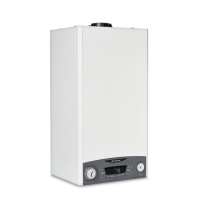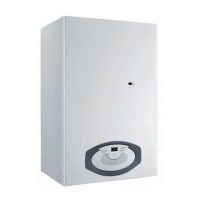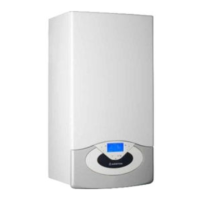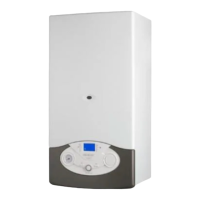32 /
COMMISSIONING
5. Disconnect the gas supply from the venturi assembly (g 4)
6. Inset the correct diaphragm (depending on the output of the
appliance) into the venturi spigot (g 5)
7. Reassemble the gas supply onto the venture assembly (g 4)
and reattach the silencer.
8. Turn on gas supply and test for tightness
9. Purge gas supply
10. Turn the electrical supply on to the appliance.
11. Commission the appliance, check the working pressure is
adequate then test and adjust the CO² values at maximum
and minimum output described in the commissioning section
of the appliance installation instructions. Ensure the ue gas
analyser used is calibrated and set for the gas group the
appliance is being adjusted for.
12. Check the appliance for gas leaks using gas leak detection
uid.
13. Afx the label to the appliance that is supplied with the
conversion kit.
Gas setting CLAS ONE R 24
parameters
G20 G31
lower Wobbe index
(15°C, 1013 mbar) (MJ/m3)
45,67 70,69
Inlet Gas pressure (mbar)
slow ignition 220 64
231 62
minimum fan speed(%) 233 4
?? 232 100
maximum output fan speed (%) 234 85
gas valve restrictor(ø) NO 3,6
gas flow max/min (15°C,
1013 mbar)
(nat - m3/h)
(GPL - kg/h)
max C.H. 2,33 1,71
min 0,39 0,29
ON
OFF
1
2
2
1
Converting the appliance from Natural gas to LPG
These appliances are designed to operate with different gas
types.
The appliance must only be converted for use with a different
gas type by a Gas Safe Registered installer.
To convert the appliance to LPG:
(use these instructions in conjunction with the Instruction sheet
supplied with the LPG Kit).
1.
Electrically isolate the appliance (g 1)
2. Turn off the gas supply (g 2)
3. Remove the outer case, lower the front control panel.
4. Remove the silencer (g 3)
3
4
5
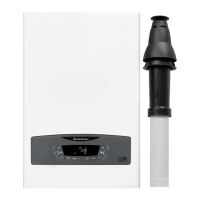
